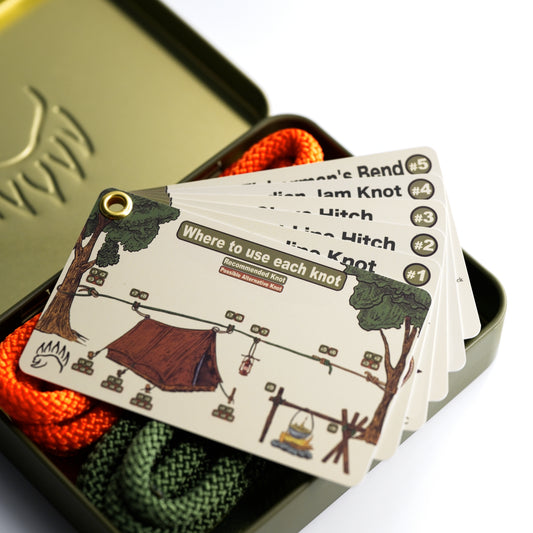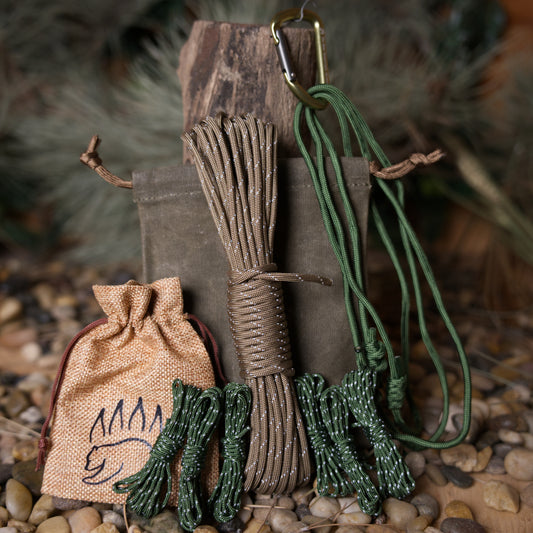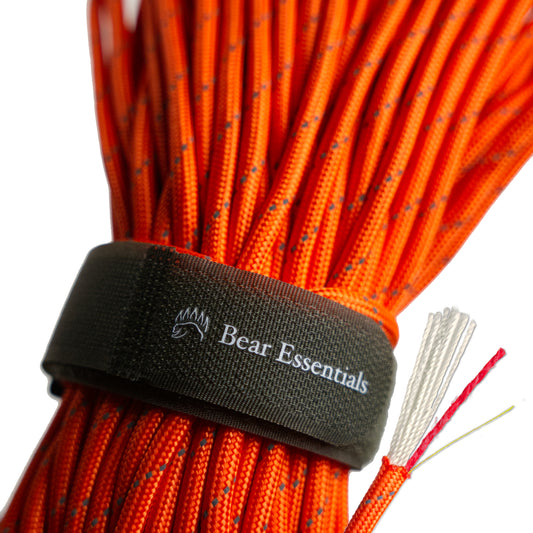How to Tie the Carrick Bend
Usage
The Carrick Bend is commonly used to join two ropes, particularly in boating for securing heavy loads or mooring lines. Compared to other bends like the Double Fisherman’s Knot or Zeppelin Bend, it’s easier to untie after strain but less compact, making it suited for large ropes. Its interwoven structure distributes stress evenly, though it requires careful tightening to hold. It’s a favorite in marine settings for its reliability and in utility tasks for bundling. The main downside is its bulkiness, which can be awkward in tight spaces.
Why Learn the Carrick Bend?
Its symmetrical weave creates a strong, reliable connection for heavy ropes. This knot is a go-to for sailors and outdoor enthusiasts needing a secure, unjammable bend.
Common Uses
-
Boating/Marine:
- Joins mooring lines for secure docking.
- Connects heavy ropes for towing or anchoring.
-
Utility:
- Bundles large items like lumber or cables.
- Secures ropes for temporary rigging setups.
ABOK Number
(Ashley Book of Knots)
Other Names
Category
|
Notable Features
- High Strength: Holds firm under heavy loads, ideal for mooring.
- Easy to Untie: Releases smoothly even after sustained tension.
- Stress Distribution: Spreads load evenly, reducing rope wear.
- Versatile Use: Works in boating, utility, or bundling tasks.
Variations
No true variations are listed in the JSON for the Carrick Bend. For added security, tie stopper knots (e.g., Overhand Knot) on both tag ends to prevent slipping under dynamic loads.
Similar Knots
Double Fisherman’s Knot vs. Carrick Bend
- Pros: More compact and stronger for climbing or fishing lines.
- Cons: Jams tightly, making it harder to untie than the Carrick Bend.
Zeppelin Bend vs. Carrick Bend
- Pros: Simpler to tie and equally easy to untie after load.
- Cons: Less traditional for heavy marine ropes, slightly less robust.
History
The Carrick Bend has deep maritime roots, used by sailors to join heavy ropes for mooring or towing. Referenced in The Ashley Book of Knots (#1439), it’s prized for its strength and ease of untying, even after heavy strain. Its adoption in utility tasks for bundling or rigging reflects its versatility beyond nautical settings, making it a staple in outdoor and industrial applications.
Security Level
The Carrick Bend provides high security for joining ropes, holding strong under heavy loads when properly tightened. Its interwoven design prevents jamming, but it must be carefully collapsed to avoid slipping. Adding stopper knots to the tag ends ensures reliability for critical tasks, especially with slick ropes.
Downsides
- Bulky structure: Can be cumbersome in tight spaces or with thin ropes.
- Tightening required: May slip if not collapsed properly before loading.
Structure
- Form a loop with the first rope, with the working end crossing over the standing part.
- Lay the second rope’s working end under the first loop, then over the standing part.
- Weave the second rope’s working end under the first rope’s working end, then over and under the loop again.
- Pull both standing lines to tighten, ensuring the knot collapses into a symmetrical shape.
- Check the knot’s interlocking pattern and add stopper knots to the tag ends if needed.
Pro Tip: Wet the ropes before tightening to reduce friction and ensure a snug knot.
FAQ
Is the Carrick Bend strong enough for heavy loads?
Yes, it’s reliable for heavy ropes in mooring or towing when tightened correctly, but add stopper knots for extra security.
What’s the best rope for the Carrick Bend?
Thick, natural, or synthetic ropes like manila or nylon work best for secure, easy tightening.
How does the Carrick Bend compare to the Zeppelin Bend?
The Carrick Bend is more traditional for heavy marine ropes, while the Zeppelin is simpler but less robust.
Can the Carrick Bend be used in climbing?
It’s not ideal for climbing due to its bulk; use knots like the Double Fisherman’s for climbing ropes.
Why choose the Carrick Bend over the Double Fisherman’s Knot?
The Carrick Bend is easier to untie after heavy loads, making it better for marine or utility tasks.
Important Notes on Safety
Common failure points include improper tightening or uneven collapsing, which can cause the knot to slip. Always verify the knot is symmetrical and test it under light load before use. Check ropes for wear or slickness before tying. Ensure the knot collapses evenly when tightened. Practice tying in low-stakes settings first.








